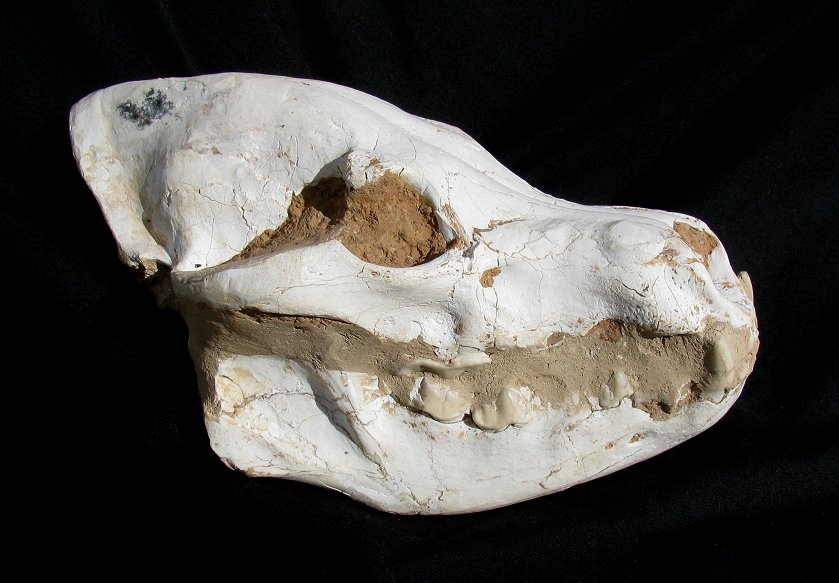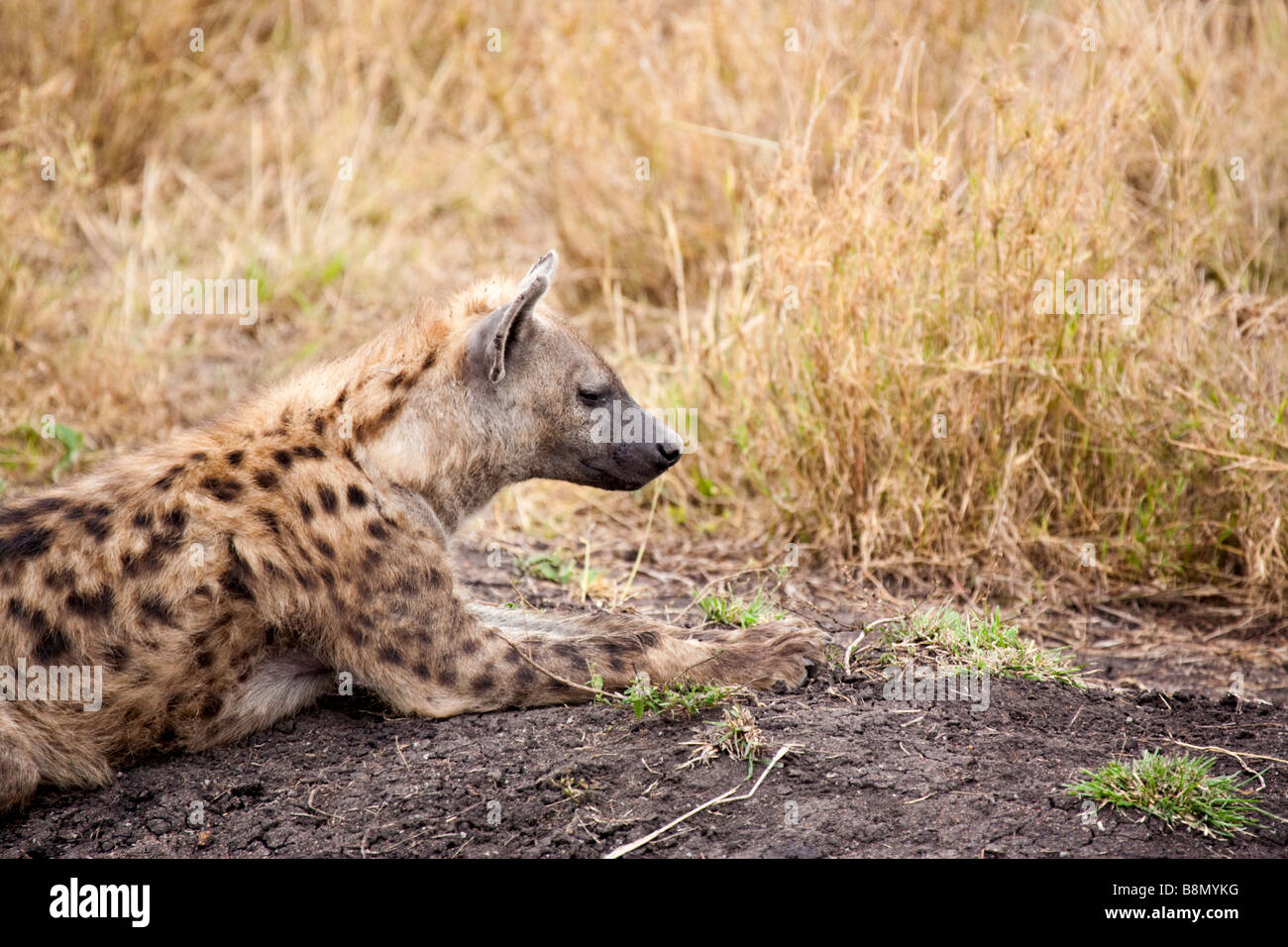Percrocuta is an extinct genus of percrocutid. It lived in Europe, Asia, and Africa, during the Miocene epoch.
Characteristics
With a maximum length of 1.50 m (5 ft), Percrocuta was much bigger than its modern relatives. Like the spotted hyena, it had a robust skull and powerful jaws. Similar to modern hyaenids, its hind legs were shorter than the front legs, resulting in a characteristic sloping back.
Classification
Percrocuta was introduced as a genus of Hyaenidae in 1938. Percrocuta's relation to the family was debated until 1985, when Percrocuta, Dinocrocuta, Belbus, and Allohyaena were accepted as the four genera of Percrocutidae. More recent evidence, however, has shown that Belbus and Allohyaena at least, are not percrocutids.
Fossil evidence
P. abessalomi is known only from a skull, two mandibles, and two teeth. These fossils were all collected from the Belomechetskaja, Russia area and date from the sixth Mammal Neogene (MN) zone. This species is the best known of the family Percrocutidae. P. miocenica is known from only a few mandibles, found in Serbia, Bosnia and Herzegovina and Turkey. These fossils are also dated to MN 6.
References




